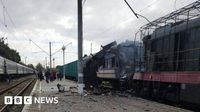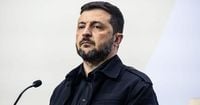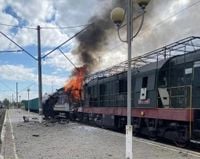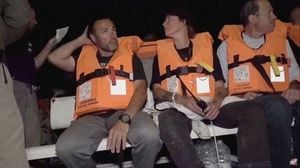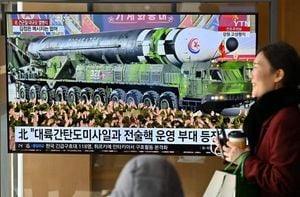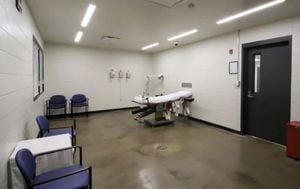On Saturday, October 4, 2025, the city of Shostka in northeastern Ukraine was rocked by a devastating Russian drone strike on its railway station, resulting in at least one death and more than 30 injuries. The attack, which Ukrainian officials and President Volodymyr Zelenskyy condemned as “savage” and “vile,” marked an escalation in Moscow’s ongoing campaign to cripple Ukraine’s rail and power infrastructure as the country faces its fourth winter since Russia’s full-scale invasion began.
Shostka, a city in the Sumy region about 70 kilometers from the Russian border and northeast of Kyiv, became the latest target in a series of Russian assaults on Ukraine’s critical civilian infrastructure. According to Zelenskyy, “All emergency services are already on the scene and have begun helping people. All information about the injured is being established.” He added that the attack was unmistakably aimed at civilians, declaring on social media, “The Russians could not have been unaware that they were targeting civilians. This is terrorism, which the world has no right to ignore.”
The sequence of the attack was particularly harrowing. As reported by both Oleksiy Kuleba, Ukraine’s deputy prime minister and reconstruction minister, and the head of Ukrainian Railways, Oleksandr Pertsovsky, Russian drones struck two passenger trains in quick succession. The first targeted a local commuter service, while the second, which hit during evacuation efforts, was bound for Kyiv. “This is one of the most brutal Russian tactics — the so-called ‘double tap,’ when the second strike hits rescuers and people who are evacuating,” Ukraine’s top diplomat Andrii Sybiha stated, according to the Foreign Ministry.
Among those injured were train staff, passengers, and at least three children aged 8, 11, and 14, according to regional governor Oleh Hryhorov. Hours after the strike, local prosecutors confirmed that a 71-year-old man was found dead in one of the wrecked carriages. Images and videos posted by Zelenskyy and Hryhorov depicted a passenger carriage engulfed in flames, underscoring the destruction wrought by the attack.
The impact of the strikes extended beyond the immediate casualties. The drone assault knocked out power in Shostka and surrounding areas—home to more than 70,000 people before the war—plunging thousands into darkness as the cold season approaches. Emergency medical teams rushed the injured to hospitals, while others sought shelter under the supervision of rescuers. An air raid alert remained active at the station, compounding the sense of chaos and urgency.
This attack was not an isolated incident but part of a broader and intensifying Russian strategy targeting Ukraine’s railways and energy infrastructure. As reported by AP and BBC, Moscow has ramped up airstrikes on Ukraine’s railway network almost daily over the past two months, aiming to disrupt military transport and sow panic among civilians. Ukrainian Railways head Pertsovsky asserted, “There was no military purpose to the attack which instead was designed to sow panic among people.”
These strikes have coincided with relentless attacks on Ukraine’s power grid. Overnight into October 4, Russian drones and missiles pounded energy facilities near Chernihiv, a northern city west of Shostka, causing blackouts for around 50,000 households, according to the regional operator Chernihivoblenergo. Dmytro Bryzhynskyi, head of Chernihiv’s military administration, confirmed multiple fires from the nighttime attack, though details on the exact targets were not immediately available.
The previous day, Russia launched what Ukrainian officials described as the largest attack to date on natural gas facilities run by the state-owned Naftogaz Group. Ukraine’s air force reported that 381 drones and 35 missiles were fired on Friday, in what officials called an effort to “wreck the Ukrainian power grid ahead of winter and wear down public support for the 3-year-old conflict.” Naftogaz CEO Serhii Koretskyi insisted, “The attacks had no military purpose,” while Prime Minister Yulia Svyrydenko accused Moscow of “terrorizing civilians.” Moscow, for its part, claimed the strikes targeted facilities supporting Kyiv’s war effort.
Overnight into Saturday, Russian forces launched an additional 109 drones and three ballistic missiles, with the Ukrainian military reporting that 73 drones were shot down or sent off course. The barrage of attacks has left Ukrainian officials pleading for more robust Western support. In a pointed message, Zelenskyy urged, “We’ve heard resolute statements from Europe and America – and it’s high time to turn them all into reality.” He and other Ukrainian leaders have repeatedly called for advanced air defense systems to counter the near-daily Russian strikes, arguing that bolstering Ukraine’s defenses is an investment in the broader security of Europe.
Beyond Ukraine’s borders, the conflict’s reverberations continue to be felt. On the same night as the Shostka attack, Ukraine reported a drone strike on the Kirishi oil refinery near St. Petersburg, Russia—over 1,200 kilometers from the Ukrainian border. The refinery, operated by Surgutneftegas, is one of Russia’s top three by output, producing approximately 17.7 million metric tons (355,000 barrels per day) of crude oil annually. Videos posted on Russian and Ukrainian Telegram channels showed drone-like objects streaking across a night sky illuminated by a fiery glow, as explosions echoed in the background. Local governor Alexander Drozdenko reported that seven drones were shot down near Kirishi and that a fire in the industrial zone was extinguished, though he did not specify the extent of the damage.
Repeated Ukrainian strikes on the Kirishi refinery have contributed to fuel shortages in Russia, prompting the Kremlin to extend a ban on gasoline exports and prohibit sales of diesel, marine fuel, and other gas oils abroad by resellers. According to Russia’s Kommersant business daily, the domestic gasoline shortage has reached 20%, or about 400,000 tons per month.
Tragically, the violence has also claimed the lives of those reporting on the conflict. On Friday, October 3, a Russian drone strike killed French photojournalist Antoni Lallican, 37, as he reported from the front lines near Druzhkivka in eastern Ukraine. Lallican, whose work appeared in outlets such as Le Monde and Der Spiegel, was the 14th reporter—and the fourth French national—to be killed while covering the war. Ukrainian photographer Hryhory Ivanchenko was wounded in the same attack.
As Ukraine braces for another winter under siege, the latest strikes on Shostka’s railway station and the country’s energy grid underscore the relentless toll of a war now entering its fourth year. With civilians, journalists, and infrastructure increasingly in the crosshairs, the calls for international action and support grow ever more urgent.

